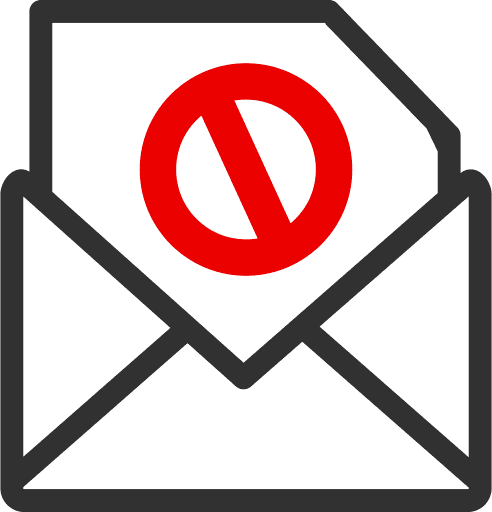Are you tired of important emails getting lost in your iPhone’s spam filter? Frustrated with missing out on important updates and opportunities? Well, worry no more! In this article, we will show you how to temporarily disable the spam filter on your iPhone, giving you full control over what lands in your inbox.
By following a few simple steps, you can ensure that no legitimate emails are mistakenly marked as spam. We will also guide you on adjusting the spam filter settings to reduce false positives and keep your inbox clean from unwanted messages.
Rest assured, our instructions are designed to prioritize your safety while providing you with the freedom to manage your email effectively. So let’s get started and take charge of your inbox today!
Accessing the Mail Settings on Your iPhone
To tweak your iPhone’s mail settings, you’ll need to dive into the hidden depths of its preferences. But fear not, for I’ll guide you through this journey with utmost care and precision.
First, let’s start by accessing the Mail Settings on your iPhone.
Begin by opening the ‘Settings’ app on your home screen. Scroll down until you find the ‘Mail’ option and tap on it.
Within these settings, you can configure email notifications and manage all your email accounts effortlessly.
To ensure a seamless experience with your emails, tap on ‘Notifications.’ Here, you can customize how your iPhone alerts you when new emails arrive. You have the power to choose between banners or alerts, sounds or no sounds – tailor it to suit your preferences while keeping safety in mind.
Now that we’ve ventured into the realm of Mail Settings, let’s navigate to the spam filter settings without delay.
Navigating to the Spam Filter Settings
First, you’ll want to head over to the settings menu on your trusty iPhone. It’s time to dive into customizing the filter sensitivity and managing email notifications. When it comes to safeguarding your inbox, these features are essential.
To access them, simply tap on the ‘Mail’ option within your settings menu. Once there, scroll down until you find the ‘Notifications’ section. This is where you can manage how your device alerts you of incoming emails.
To customize the filter sensitivity, tap on ‘Mail’ again and then select ‘Filter Unknown Senders.’ Here, you have the power to enable or disable this feature as per your preference. Keep in mind that disabling this filter might expose you to potential spam messages.
Now that we’ve covered customizing filter sensitivity and managing email notifications, let’s move on to temporarily disabling the spam filter altogether. This will allow all incoming emails, including potential spam messages, to land directly in your inbox.
Disabling the Spam Filter Temporarily
Let’s take a moment to explore a fun and convenient way to give your inbox a break from its usual filtering duties. Sometimes, you might want to temporarily disable the spam filter on your iPhone so that you can receive emails that may have been mistakenly marked as spam. Don’t worry, though! Disabling the spam filter is simple and safe.
To start, open the Settings app on your iPhone and scroll down until you find the ‘Mail’ option. Tap on it, and then select ‘Blocked Sender Options.’
Here, you’ll be able to adjust the sensitivity of your spam filter by sliding the toggle to a lower setting. This will allow more emails to reach your inbox without being flagged as spam.
Additionally, managing blocked senders can help ensure important emails are not accidentally filtered out. By reviewing and removing any blocked senders that you trust, you can prevent their messages from being flagged in the future.
Now that we’ve covered how to temporarily disable your spam filter, let’s move on to adjusting the settings further in order to reduce false positives.
Adjusting Spam Filter Settings to Reduce False Positives
One way to decrease the number of emails mistakenly marked as spam is by adjusting the sensitivity settings in your iPhone’s Mail options. By tweaking these settings, you can manage and reduce false positives, ensuring that important messages don’t get lost in the spam folder.
To adjust the spam filter sensitivity, go to Settings on your iPhone and select Mail. From there, tap on Spam Filter and adjust the sensitivity slider according to your preferences. Moving it towards ‘Less’ will lower the strictness of the filter, which means more emails could potentially end up in your inbox. However, if you move it towards ‘More,’ it will increase the filter’s strictness, reducing false positives but potentially filtering out legitimate emails.
Additionally, managing email notifications can help you stay on top of important messages without compromising safety. You can choose to receive notifications only for VIP senders or turn off notifications for specific email accounts altogether.
Once you have adjusted these settings to minimize false positives and optimize your email experience, you can enable the spam filter again by following similar steps in the Mail options section.
By fine-tuning your spam filter’s sensitivity and managing email notifications effectively, you can strike a balance between safety and ensuring important messages reach your inbox without delay.
Enabling the Spam Filter Again
After adjusting the sensitivity settings, you can quickly re-enable the spam filter on your iPhone by following similar steps in the Mail options section.
To ensure that your device is protected from unwanted and potentially harmful messages, it’s important to enable spam protection. By doing so, you can maintain a high level of spam filter effectiveness.
To enable the spam filter again, open the Settings app on your iPhone and scroll down until you find ‘Mail.’ Tap on it to access the Mail settings.
Within this section, locate ‘Blocked Sender Options’ or a similar option that pertains to spam filtering. Toggle the switch to turn on the feature and activate spam protection.
Once enabled, your iPhone will analyze incoming emails for potential spam or malicious content. It will then automatically move these messages into your Spam folder, keeping them out of sight and reducing any possible harm they may cause.
Now that you’ve successfully re-enabled the spam filter on your iPhone, let’s move on to troubleshooting common issues in order to maximize its efficiency and ensure a safe email experience without any disruptions.
Troubleshooting Common Issues
Having trouble with your iPhone’s spam filter? Let’s troubleshoot some common issues to ensure a seamless and secure email experience.
Common spam filter problems can sometimes arise, causing legitimate emails to end up in the spam folder or blocking important messages altogether. To address this, start by checking your email settings and making sure that the spam filter is enabled and properly configured. If it’s already enabled, try adjusting its sensitivity level to strike a balance between catching unwanted emails and allowing genuine ones.
Another common issue is false positives, where the spam filter incorrectly marks legitimate emails as spam. To resolve this, you can create a whitelist of trusted senders so that their emails are never mistakenly filtered out. Additionally, regularly check your spam folder for any false negatives – real spams that slip through the filter – and mark them as such to improve future filtering accuracy.
In terms of email security tips and tricks, be cautious when opening attachments or clicking on links from unknown sources. These could potentially contain malicious content or lead to phishing attempts. It’s also advisable to enable two-factor authentication for your email account and use strong, unique passwords.
By troubleshooting common issues related to your iPhone’s spam filter and following these email security tips and tricks, you can enhance both the effectiveness of your email filtering system and safeguard against potential threats effectively.
Frequently Asked Questions
Can I disable the spam filter permanently on my iPhone?
To ensure the safety of your iPhone, it is not recommended to permanently disable the spam filter. However, you can explore alternative spam filtering methods such as third-party apps or adjusting the filter settings.
What are the potential risks of temporarily disabling the spam filter?
To manage spam emails effectively on your iPhone, explore alternative spam filter options available in the App Store. While temporarily disabling the spam filter may offer convenience, it exposes you to potential risks such as increased exposure to malicious content and scams.
Can I whitelist specific email addresses or domains while the spam filter is disabled?
While the spam filter is disabled, you can whitelist specific email addresses or domains to ensure important emails are not marked as spam. This allows for more control over your email filtering, ensuring safety and managing spam on multiple devices. Whitelisting vs blacklisting provides a proactive approach to filtering unwanted emails.
Will disabling the spam filter affect the overall performance or speed of my iPhone?
Disabling the spam filter on your iPhone does not compromise its security. However, there are alternative ways to manage spam without disabling it, such as using third-party email apps or creating filters within your email settings.
Is there a way to customize the sensitivity of the spam filter to reduce false positives without disabling it completely?
Customizing the spam filter on your iPhone allows you to reduce false positives without disabling it completely. This ensures a safer experience while still giving you control over what messages are flagged as spam.
Conclusion
Congratulations! Now you know how to temporarily disable the spam filter on your iPhone. By following a few simple steps, you can have full control over your email filtering preferences.
Remember to adjust the settings accordingly to minimize false positives and ensure important emails are not marked as spam.
If you encounter any issues, don’t worry! Troubleshooting common problems will help you get back on track.
Enjoy a hassle-free email experience with your iPhone!

